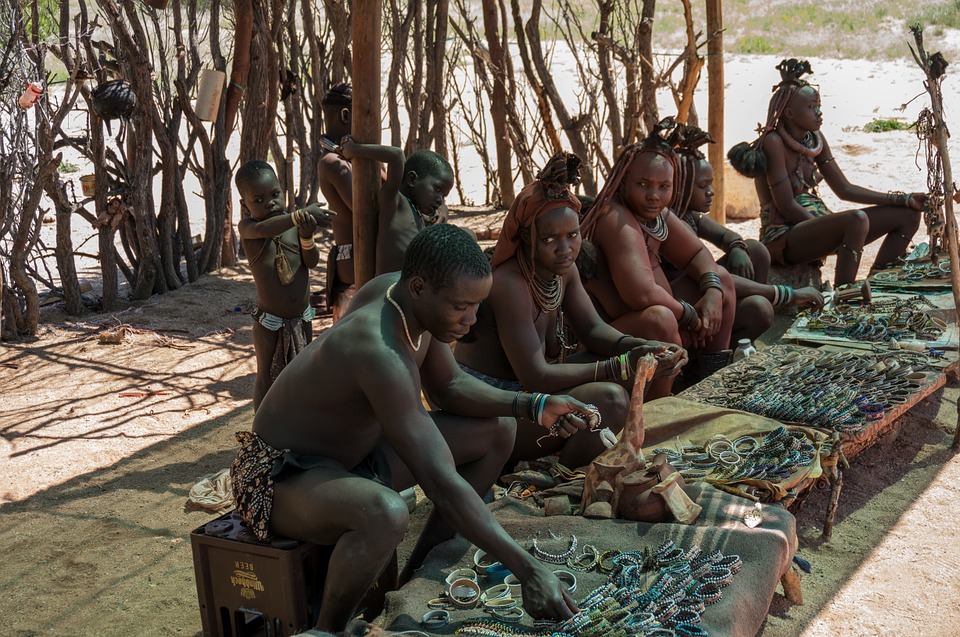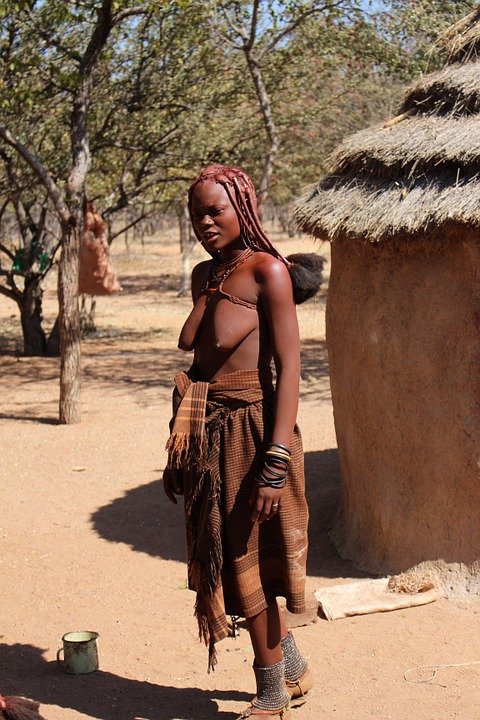Tribalogy-Part#3 Himba Tribe
Himba is an indigenous tribe that lives in the Kunene region of Namibia and on the side of the River Kunene in Angola. The total population of the Himba tribe is approximately 50,000 with the vast majority of them still following their old nomadic way of life, moving from place to place in search of favorable environment and food. This tiny and unique community has got so much attention across the globe that the government had put strict rules on foreign tourists for not visiting them too much to protect them from overexposure and unfriendly influence.

Image Source: Pixabay.com
Sub-tribes in Himba
Though division is not part of the culture in Himba tribe since they live in extremely closely-bonded communities yet they are normally divided into two categories on the basis of their lineage.
- Oruzo
- Eanda
The division is unique in a sense that every member of the community is a part of both the categories i-e Oruzo and Eanda. The Oruzo is a member’s clan from father’s side and Eanda is the ancestry from the mother side. Every member of this community is a mutual descendant of both father and mother’s inheritance.This dual inheritance helps the community in relying on both sides to fulfill its needs and in preserving their identity. Normally the sons live with the clan of their fathers and daughters live with the clans of their mothers.
Origin
Himba people are considered to be the part of Herero community who traveled across the Angolan border to settle in Kokoland, which is now known as Himba. During their stay, they came under the attack of German colonial forces led by Lothar von Trotha which nearly led to their extermination.
Due to the unfavorable conditions, some of the sub-tribes of Herero community moved towards the town of Opuwo where they would beg for food. The seek of help from local communities got them the name ”Himba” which means “beggar”.
Religion
The tribe of Himba is monotheistic in the interpretation of its religion and worships a single God known as Mukuru but they also accept their ancestors as the representatives of Mukuru. Every family keeps its sacred ancestral fire which is guarded by the firekeeper. The firekeeper who is normally the eldest of the family had to approach the fire in order to communicate with the God and his representatives as mentioned above. According to their belief, Mukuru is the source of blessings only whereas ancestors can bless or curse depending on their actions in the world.
These people also believe in black magic which they called Omiti. They think that Omiti can harm them or any of their relatives or beloved ones and they normally visit a divine faith healer in case they feel that have been under the influence of Omiti.
Code of conduct
Though Himba people are very unfriendly to any foreign influence yet at the same time they interact with other ethnic communities in their neighborhood. The members of Himba tribe go to the shops of other communities and even to the supermarkets and hospitals in the cities.
The Himba community practice Polygamy i-e the males can have multiple wives at a time. Most of the marriages that take place are decided by the elders and are thus arranged. A person is considered to be eligible for marriage once he/she reaches the age of puberty. Boys are circumscribed before the puberty like other communities.
Music
The Himba people are also quite fond of traditional music and dance. The most popular musical instrument in the Himba community is the ohuta, which is played on the special occasions.
In the Himba community, the couples play a particular song during mating and during developmental phases of the child.
Clothes

Image Source: Pixabay.com
The Himba community wears clothes made of calfskin or increasingly of modern fabrics along with shoes which are made of the tyre. The members of this tribe cover their bodies with a mixture of Ochre pigment and butterfat to protect them from germs and mosquito bites. Another cosmetic mixture made up of Omuzumba shrub is also pasted on the body to give them a good aroma. The scarcity of water is the main reason for this arrangement since they take bath very
rarely.
In Himba, the hairstyles and jewelry also play a key role in the identification of age and social status of a member.
Children have their heads shaved with hairs only on the crown. The hairs are braided into one plait in case of boys and into two in case of two girls. Those girls who are born as twins also have one plait on their head.
Adult boys have hairs braided into one plait and adult girls can have many plaits that serve as a veil to the face.
A married woman has braided hairs painted with a paste and wears a sheepskin headpiece whereas a married man wears a head wrap with hairs below it.
Himba people also wear different types of jewelry to increase their natural beauty.
Ceremonies
A lot of ceremonies take place in the community on special occasions like death and weddings but mostly these ceremonies are kept secret. On the occasion of death, they combine together in a congregation and bid farewell to the departed soul with songs of sorrow. The animal owned by the deceased is slaughtered to serve as a food for guests and this festivity continue for three days.
These people often take a bath in smoke to protect themselves from evil spirit according to their belief.
Tribal traits
Friendly
Himba people are very friendly and peaceful and mostly stay away from the modern facilities of life.
Hard working
Himba people are very hard working and laborious. These people live their lives by working in fields and farms.
Introvert
Though the community is very friendly to the tourists and visitors yet it also resists any foreign influence in their lives.
Food
The Himba community mostly eats maize and pearl millet flour with water mixed in it. They do eat meat by slaughtering their animals but very rarely on special occasions.
This is 3rd part of my series of introducing different tribes from across the globe.The first two parts of the series can be read in the links given below.
https://steemit.com/life/@mmasim/tribalogy-part-1-pashtun-tribe
https://steemit.com/life/@mmasim/tribalogy-part-2-kalash-tribe
This is really interesting to learn about their family systems and beliefs. Why do governments sometimes choose to keep tribes isolated? I guess I could understand keeping big businesses and tourists out of the way, but a lot of people would probably also like to interact with these people if they could.
Thank you so much for commenting and helping me earn, sir. That's extremely kind of you. The government keeping them isolated to preserve their culture thought but yeah you are right it will give them a chance to interact with other people plus to improve their economic status too